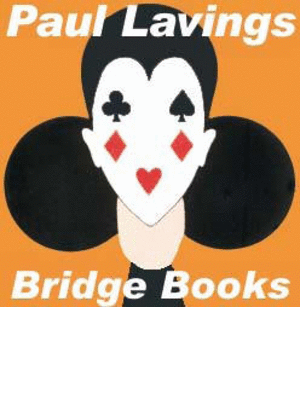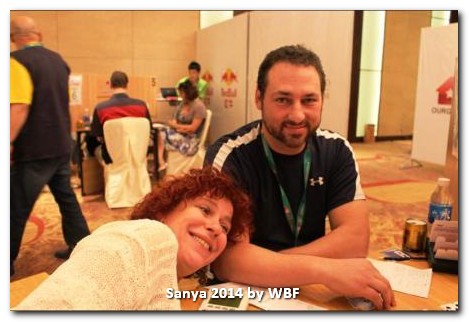Commonly Used Conventions
More Conventions
Source: ABF  By Paul Lavings paul@bridgegear.com
By Paul Lavings paul@bridgegear.com
What would you rebid on these hands:
1![]() – 1
– 1![]()
?
1. ![]() 64,
64, ![]() AQ105,
AQ105, ![]() 76,
76, ![]() AKQJ62
AKQJ62
2. ![]() Q6,
Q6, ![]() A1065,
A1065, ![]() A8,
A8, ![]() AQ984
AQ984
3. ![]() Q,
Q, ![]() KJ5,
KJ5, ![]() KJ87,
KJ87, ![]() AJ765
AJ765
4. ![]() K6,
K6, ![]() AQJ6,
AQJ6, ![]() 6,
6, ![]() A109854
A109854
5. ![]() 6,
6, ![]() AKJ105,
AKJ105, ![]() 5,
5, ![]() AQJ654
AQJ654
6. ![]() 6,
6, ![]() A7653,
A7653, ![]() 6,
6, ![]() AQJ653
AQJ653
1. 2![]() . In the 1950s and 60s there was only one bridge authority, Charles Goren. Experts of the day could quote verbatim from his grand opus, “Goren’s Bridge Complete”. How well I remember his description of a reverse in bold type, “A reverse is a bid which forces preference at the three level”. So a sequence such as 1
. In the 1950s and 60s there was only one bridge authority, Charles Goren. Experts of the day could quote verbatim from his grand opus, “Goren’s Bridge Complete”. How well I remember his description of a reverse in bold type, “A reverse is a bid which forces preference at the three level”. So a sequence such as 1![]() – 1
– 1![]() : 2
: 2![]() shows 16+ points or the equivalent, because with a bare minimum responder has to retreat to 3
shows 16+ points or the equivalent, because with a bare minimum responder has to retreat to 3![]() simply to sign off in the partnership’s better fit.
simply to sign off in the partnership’s better fit.
2. Open 1NT. If you open 1![]() you have to bid 2
you have to bid 2![]() now, but you are better to open 1NT with good strength in your doubletons. Also it is preferable to have your hand as declarer, with the lead coming around to your short honours.
now, but you are better to open 1NT with good strength in your doubletons. Also it is preferable to have your hand as declarer, with the lead coming around to your short honours.
3. 1NT. You are better to downgrade than upgrade with your singleton in responder’s suit, scattered lower honours and poor suits.
4. 2![]() . Rather than rebid 2
. Rather than rebid 2![]() you should upgrade your hand and reverse to 2
you should upgrade your hand and reverse to 2![]() . All your honours are working well and in notrumps your club suit has extra muscle with the 10-9-8. If you rebid 2
. All your honours are working well and in notrumps your club suit has extra muscle with the 10-9-8. If you rebid 2![]() you might miss a 4-4 heart fit when responder has fi ve spades and four hearts with 8 or 9 HCP and passes 2
you might miss a 4-4 heart fit when responder has fi ve spades and four hearts with 8 or 9 HCP and passes 2![]() .
.
5. 2![]() . Only 15 HCP but super shape and strong suits. You intend to bid 4
. Only 15 HCP but super shape and strong suits. You intend to bid 4![]() on your next turn. Beware of bidding 4
on your next turn. Beware of bidding 4![]() over 1
over 1![]() as that would be a splinter agreeing spades.
as that would be a splinter agreeing spades.
6. 2![]() . Some experts prefer to open 1
. Some experts prefer to open 1![]() but surely if you wish to reach your best fit you should open your longer suit fi rst. So what do you rebid over 1
but surely if you wish to reach your best fit you should open your longer suit fi rst. So what do you rebid over 1![]() -1
-1![]() ? Bid 2
? Bid 2![]() , and trust that events will lead you to your heart fit if you have one. Here is one of the many possible ways to reach your 5-3 fit through the back door:
, and trust that events will lead you to your heart fit if you have one. Here is one of the many possible ways to reach your 5-3 fit through the back door:
| 1 |
Pass | 1 |
Pass |
| 2 |
Pass | 2 |
Pass |
| 4 |
All Pass | ||
Responding to Reverses
There are many systems of responding to a reverse, and over time I have played Blackout, Lebensohl, Transfers and a few others. These days I prefer something simple and natural:
1![]() 1
1![]()
2![]() 2
2![]() The automatic and economical bid with 5+ spades. Forcing for one round 2NT Natural and non-forcing, opener may have just 16 HCP and responder may just have 6 or 7 HCP
The automatic and economical bid with 5+ spades. Forcing for one round 2NT Natural and non-forcing, opener may have just 16 HCP and responder may just have 6 or 7 HCP
3![]() Simple preference, natural, non-forcing
Simple preference, natural, non-forcing
3![]() Fourth suit game forcing, may have good club support or four-card heart support or all sorts of good hands
Fourth suit game forcing, may have good club support or four-card heart support or all sorts of good hands
3![]() Natural non-forcing, maybe 6 or 7 HCP
Natural non-forcing, maybe 6 or 7 HCP
3![]() At least six good spades, game forcing
At least six good spades, game forcing
3NT An assurance of good stoppers in the unbid suit and lack of fit for opener’s suits

Migry Zur
Australia’s top player, Ishmael Del’Monte, plays that the cheapest bid over the reverse is non-forcing and everything else is game forcing. So if it goes 1![]() – 1
– 1![]() , 2
, 2![]() then 2
then 2![]() shows a minimum hand and may only have a four-card suit, and is the only rebid that is not forcing to game.
shows a minimum hand and may only have a four-card suit, and is the only rebid that is not forcing to game.
When on lead
When opponents have a reverse sequence and finish in 3NT, their weakness is often responder’s first suit. Study this sequence:
| 1 |
Pass | 1 |
Pass |
| 2 |
Pass | 2NT | Pass |
| 3NT | All Pass | ||
Frequently opener will have a singleton spade while responder could just as easily have four small spades. Responder’s suit is frequently their Achilles Heel. You might even anticipate a singleton honour in dummy and lead low from QJ10xx.
The spade suit in the above sequence could well be:
If you lead ![]() Q declarer has a stopper, and a spade trick.
Q declarer has a stopper, and a spade trick.![]() 3 lead is the winner.
3 lead is the winner.
Paul Lavings Bridge Books & Supplies,
for all things bridge.
paul@bridgegear.com
